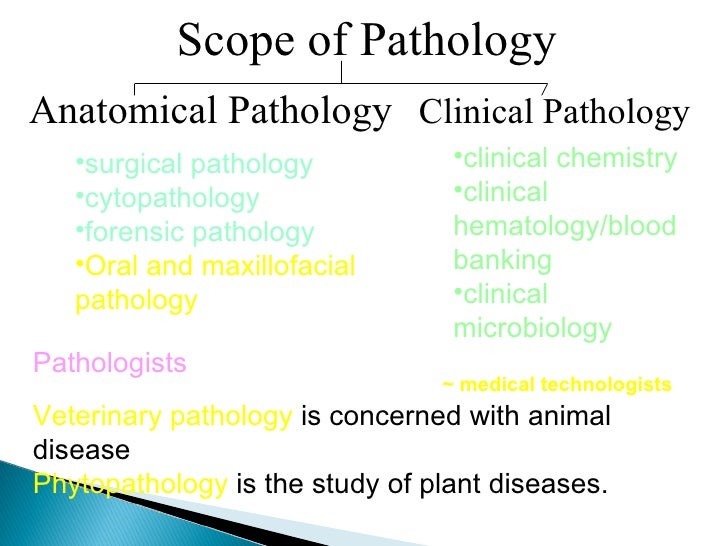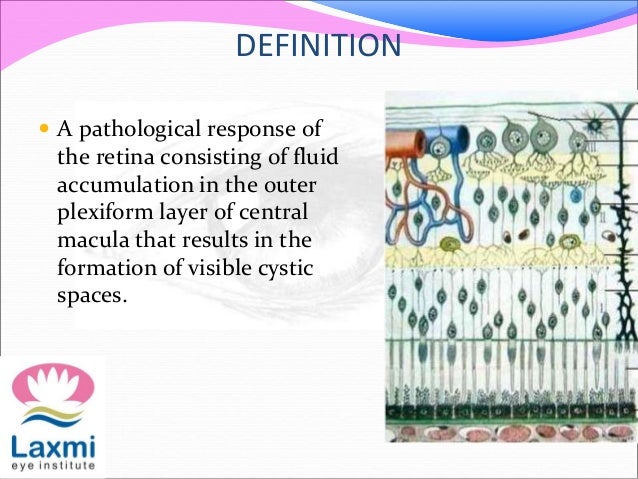
The cause of the disease is referred to as its etiology (from the Greek word meaning the study of cause). Disease refers to a definable deviation from a normal phenotype (observable characteristics due to genome and environment), evident via patient complaints (symptoms), and/or the measurements of a careful observer (signs). Pathology (from the Greek word pathología, meaning the study of suffering) refers to the specialty of medical science concerned with the cause, development, structural/functional changes, and natural history associated with diseases. The presentation of a disease to a clinician is in the form of a human patient with variably specific complaints (symptoms), to which the examining physicians can add diagnostic sensitivity and specificity by making observations (screening for signs of diseases). Pathogenesis can refer to the changes in the structure or function of an organism at the gross/clinical level and the stepwise molecular abnormalities leading to changes in cellular and tissue function. This stepwise process of disease development is referred to as its pathogenesis.
DEFINITION OF PATHOLOGICAL DISEASE SERIES
Each disease entity develops through a series of mechanistic chemical and cellular steps. One disease entity can have more than one etiology, and one etiology can lead to more than one disease. The cause of the disease is referred to as its etiology.

Pathology refers to the specialty of medical science concerned with the cause, development, structural/functional changes, and natural history associated with diseases.

It describes some key terms, definitions, and concepts, presents historical human approaches to diseases, and provides an overview of current diagnostic practice and a vision for new interface with applied molecular biology. Pathophysiology is a required study for under most nursing school programs in the United States as well as other countries.This chapter discusses the fundamental concepts, terminology, and practice of pathology as the discipline dedicated to the understanding of causes, mechanisms, and effects of diseases. One caution in this approach is that healthy structure and function is not precisely the same in any two individuals. Pathophysiology looks at the detailed malfunctioning that comes from or, alternately, causes disease. Pathology, broadly speaking, is the "study of the nature and cause of disease." or the results of disease in the body. When something disrupts normal physiological processes, it enters the realm of pathophysiology. Physiology is the study of normal, healthy bodily function (as opposed to anatomy, which is the study of normal structure). Pathophysiology can be looked at as the intersection of two older, related disciplines: (normal) physiology and pathology. Another example is the study of the chemical changes that take place in body tissue due to inflammation.

Pathophysiology is the study of the disturbance of normal mechanical, physical, and biochemical functions, either caused by a disease, or resulting from a disease or abnormal syndrome or condition that may not qualify to be called a disease.Īn alternate definition is "the study of the biological and physical manifestations of disease as they correlate with the underlying abnormalities and physiological disturbances." Īn example, from the field of infectious disease, would be the study of a toxin released by a bacterium, and what that toxin does to the body to cause harm, one possible result being sepsis.

Risk calculators and risk factors for PathophysiologyĬauses & Risk Factors for Pathophysiology US National Guidelines Clearinghouse on Pathophysiologyĭirections to Hospitals Treating Pathophysiology Ongoing Trials on Pathophysiology at Clinical Ĭlinical Trials on Pathophysiology at Google Articles on Pathophysiology in N Eng J Med, Lancet, BMJĬochrane Collaboration on Pathophysiology


 0 kommentar(er)
0 kommentar(er)
